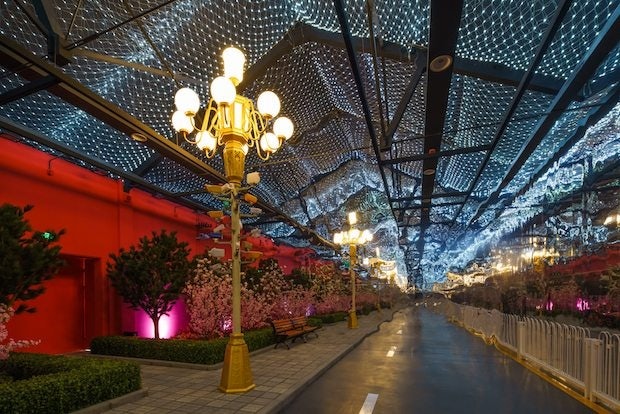
Once the home of major historical Chinese intellectual figures including writer Mao Dun and artist Mu Xin, the picturesque canal town of Wuzhen is now more closely associated with selfie-snapping middle-class Chinese tourists. But a new exhibition featuring works by art superstars such as Marina Abramović and Ai Weiwei is aimed upping the town’s caliber as a center for fine art and attracting a more upscale visitor base.
On March 27, Wuzhen unveiled the grand opening of its exhibition “Utopias/Heterotopia,” which features a formidable lineup of pieces by 40 top global artists, including 12 works created specifically for the exhibit. The exhibition includes works by Araki Nobuyoshi, Chen Zhiguang, Cheng Dapeng, Choe U-Ram, Richard Deacon, Olafur Eliasson, Xu Bing, Roman Signer, and more, which are distributed through both the town’s massive new North Silk Factory exhibition space as well as in outdoor installations in Wuzhen’s tourist-oriented West Scenic Zone. With an opening date that allowed elites to fly in from Art Basel Hong Kong, the exhibit has backing from heavy-hitters in the China art world, including chief curator Feng Boyi and an advisory committee that includes major collector Uli Sigg, Rome’s MaXXi director Hou Hanru, and Ullens Center for Contemporary Art Director Philip Tinari.
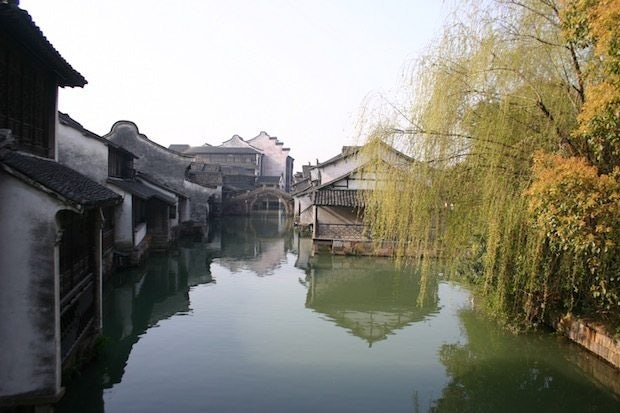
One of several historic canal towns in southern China that attract huge numbers of tourists, Wuzhen has recently embarked on an ambitious cultural development program. With extensively restored canal-side Ming and Qing dynasty architecture that creates an atmosphere straight out of a classical Chinese painting, the town two hours away from Shanghai has become a massive hit with tourists after its development by the state-owned Cultural Wuzhen Co., Ltd. In addition to the extensive architectural restoration, the company has developed the tourism infrastructure in the town with hotels, restaurants, and shopping. The new exhibition opening comes five months after opening the starchitect-designed Mu Xin Art Museum, and the town also now hosts the Wuzhen Theatre Festival, which sees involvement from top film figures such as Ang Lee.
The development of Wuzhen as an art and culture center is aimed at attracting a new type of elite visitor, said chief curator Feng Boyi. At the opening’s press conference, he stated that the town’s focus on fine art is intended not only to educate current visitors about about art, but also to persuade more “fashionable and interesting young people” to come to Wuzhen. By “inviting cultural elites and artists,” he said, “Wuzhen will definitely become more intellectual and a place where knowledge is produced.”
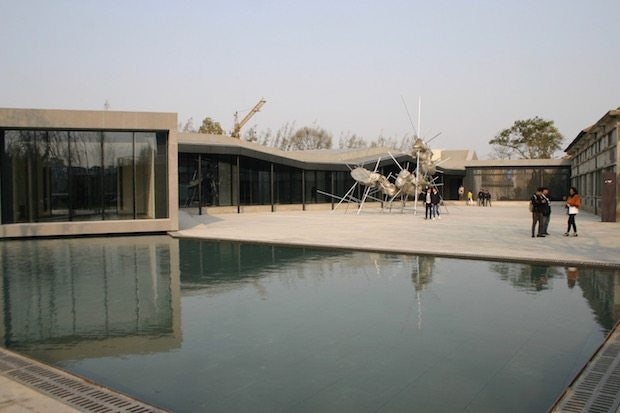
The “utopia”-related exhibition theme was chosen as a commentary on the town’s role as a tourist site, says curator Wang Xiaosong, who writes in an essay that Wuzhen is a “pure ‘utopia’” for visitors with its photo-ready setting.
The majority of the exhibition’s works, which revolve around this theme, are on display in the multiple converted industrial buildings of North Silk Factory near the main gate of the ticketed tourist area. Highlights include Ai Weiwei’s newest large-scale installation entitled Colored House, a brightly painted structure rebuilt from abandoned parts of old houses across southern China, and artist Song Dong’s 100-square-meter Avenue Square installation, which features a “counterfeit version of Beijing’s Tiananmen Square in miniature,” according to Wang.
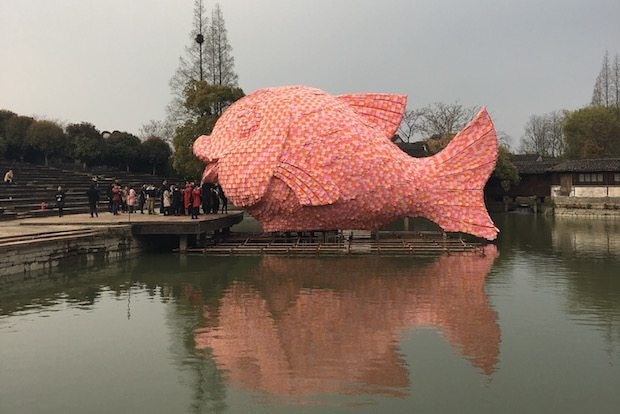
While the North Silk Factory isn't within the main ticketed zones frequented by the town’s typical tourist base, visitors won’t be able to miss the outdoor installations located in the West Scenic Zone. The art’s exposure to tourists in the West Scenic Zone is “an experimental aspect of this exhibition,” writes Wang. Works in this area include an installation by Florentijin Hofman—known for his Hong Kong “rubber duck” piece—created specifically for the exhibition. Titled Floating Fish, the pastel-colored piece is made out of children’s swimming toys and takes inspiration from the koi found in the town’s waterways. Another piece by American artist Ann Hamilton transforms the town’s traditional theater into a weaving workshop, which is intended to “re-understand” the space and “re-think the structural value of work in life,” according to the piece’s description.
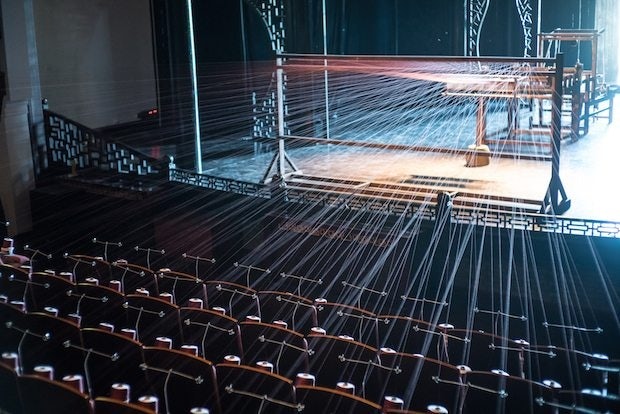
The exhibition marks a self-aware turn for Wuzhen, featuring a reflection on its role in China’s selfie-centric tourism culture. “Like nearly every other tourist ‘destination,’ Wuzhen’s West Scenic Zone requires a ticket for entry,” writes Wang. “Experience mediated by press-gallery-like telephotos and smartphone cameras has become the defining characteristic of contemporary tourism and seeing,” he states, noting that the sharing “ritual” on social media on WeChat is its “final expression.” He argues that Wuzhen is an example of the ways in which this phenomenon has “found an even more extreme expression in China,” stating, “if this were not the case, how would one understand the throngs of people who, in the name of ‘leisure,’ crowd themselves into human pyramids at scenic spots throughout the country?”
According to Song Dong, the town’s cultural development could alter its visitor profile beyond these "throngs" to attract elites. “In the future, there will be more intellectuals here to create works of art, and perhaps even to live,” he said in a Chinese-language interview. But for now, “there are two types of people who live in Wuzhen: tourists and people who serve the tourists. Shouldn’t there be a third type of people here? It should be locals who truly enjoy living here, who can contribute to Wuzhen’s culture. I think that will happen someday.”